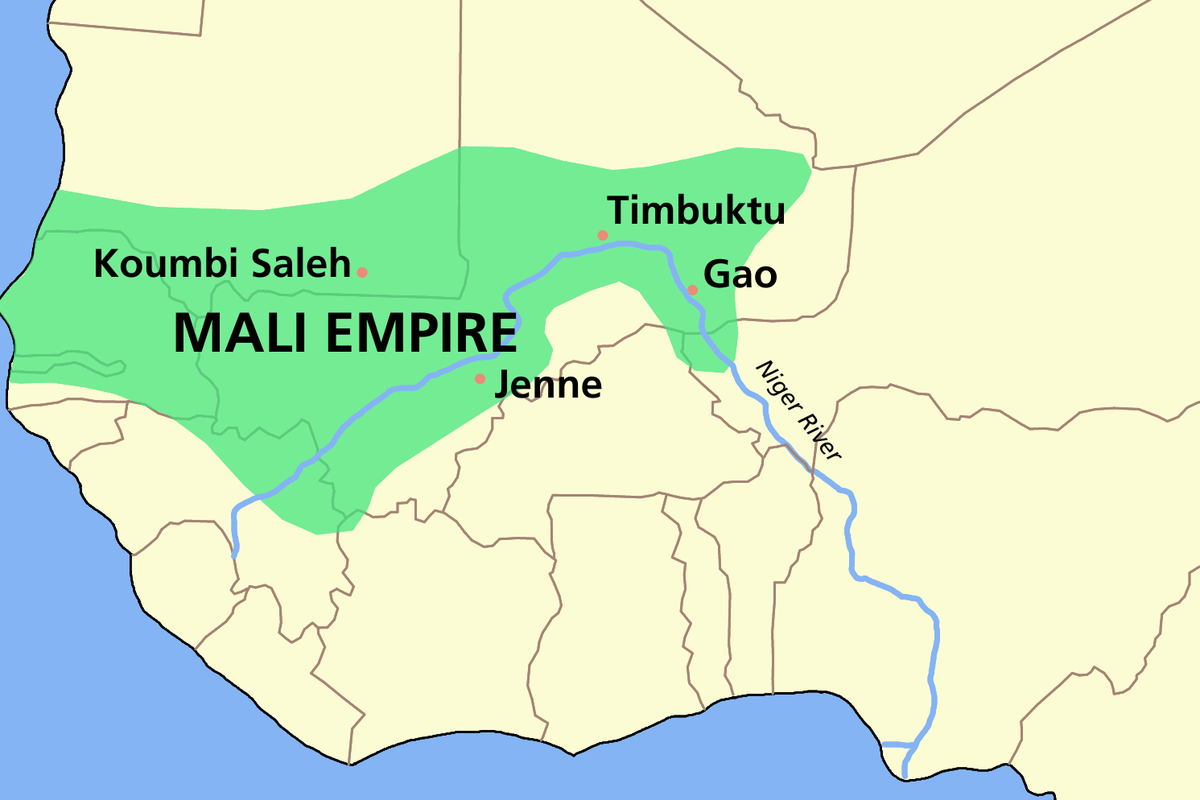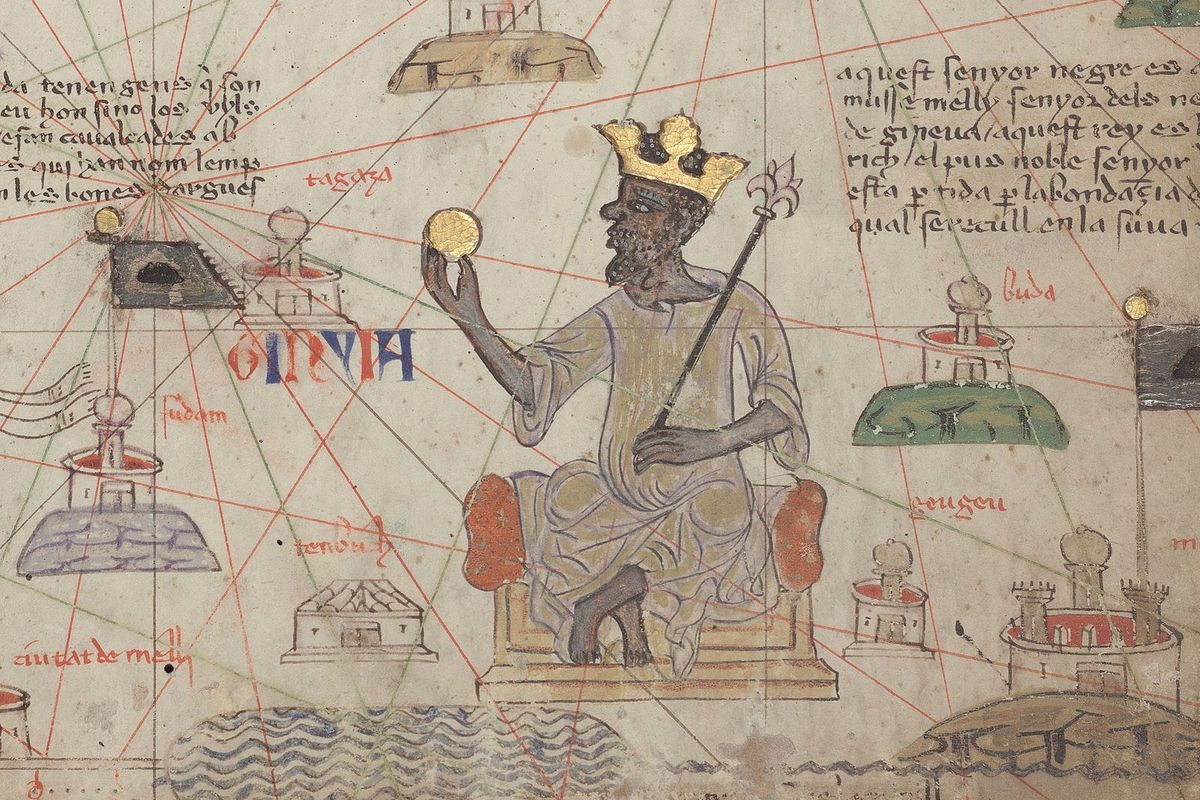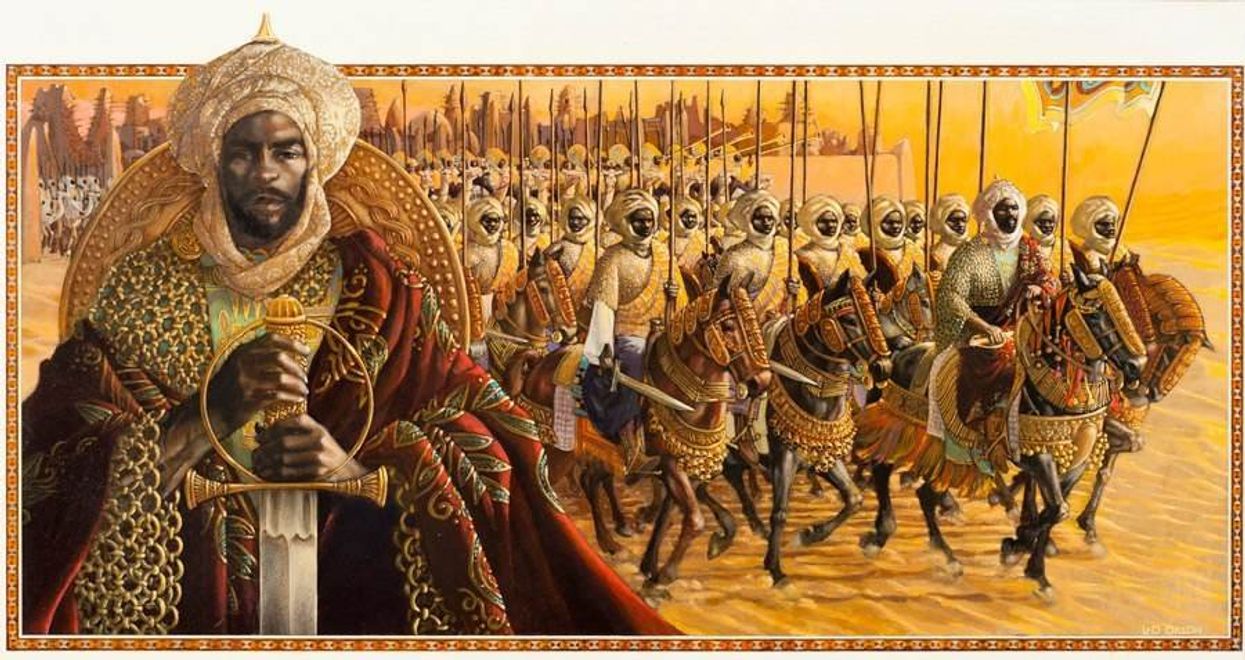Harriet Brewis
Oct 16, 2024
The Untold Truth Of Mansa Musa: The Richest Man In History
Grunge / VideoElephant
The wealth enjoyed by the likes of Elon Musk and Jeff Bezos may be unfathomable to most of us mere mortals, but to the richest man in history, it was mere pocket change.
Indeed, Mansa Musa, who ruled the African kingdom of Mali between 1312 and 1337, was so rich, economic historians say it is impossible to quantify his net worth. Although, some, inevitably, have tried.
In 2012, the website Celebrity Net Worth estimated his wealth at $400 billion (around £313 billion) which, to put it into context, is almost $180 billion (£130 billion) more than Musk is worth and $213 billion (£167 billion) more than Bezos.
Still, whilst most experts agree that it is fruitless to try to translate the riches of a 14th century ruler into modern-day terms, they concede that Musa’s wealth trumps any of today’s Forbes list-toppers.
So who was this ancient king who was apparently blessed with a real Midas touch? And how did he end up with the widely-attributed title of richest man of all time?
Who was Mansa Musa?
Musa I of Mali was born in 1280 into a family of rulers. He came to power after the country’s previous king, his brother Abu Bakr II, disappeared at sea.
According to 14th Century Syrian historian Shibab al-Umari, Abu-Bakr was obsessed with the Atlantic Ocean and what lay beyond it. So, in 1312, he embarked upon an ambitious expedition to explore the seas, featuring a fleet of 2,000 ships and thousands of men, women and slaves.
The vast party sailed off, never to be seen again.
At the time of Musa’s ascendency to the throne, Mali was already one of the richest kingdoms in Africa – spreading across parts of modern-day Mali, Senegal, the Gambia, Guinea, Niger, Nigeria, Chad, Mauritania, and Burkina Faso, the Encyclopedia Britannica notes.

His great successes came from expanding trade and developing cities like Timbuktu and Gao into important cultural centres.
With the help of renowned architects, which he brought in from the Middle East and across Africa, Musa built mosques and large public buildings in his cities, most notably in Timbuktu, which swiftly transformed into a major Islamic educational hub.
He died in 1337, at the age of 57, and was succeeded by his sons. And whilst his skills left the empire well-off and respected across the continent and beyond at the time of his death, eventually, the empire crumbled.
How did he get so rich?
During Musa’s reign, the empire of Mali accounted for almost half of the Old World's gold, according to the British Museum. And all of it belonged to the king.
"As the ruler, Mansa Musa had almost unlimited access to the most highly valued source of wealth in the mediaeval world," African art specialist Kathleen Bickford Berzock, of Northwestern University, told the BBC back in 2019.
"Major trading centres that traded in gold and other goods were also in his territory, and he garnered wealth from this trade," she added.
Alongside gold, his riches came from mining Mali’s significant salt deposits and trading in elephant ivory.
How did he earn his reputation?
Despite its impressive resources, the kingdom of Mali was not well known outside of West Africa at the start of Musa’s reign.
This all changed when he, a devout Muslim, embarked upon the hajj pilgrimage to Mecca in 1324, which led him through the Sahara Desert and Egypt.
Arab writers from the time said Musa travelled with an entourage of tens of thousands of people and dozens of camels, each carrying 136kg (300lbs) of gold, Britannica reports.
When he reached the Egyptian capital, Cairo, Musa, and his companions handed out so much gold that the overall value of the precious metal reportedly plummeted in the region, wrecking the Egyptian economy for around a decade.
US-based technology company SmartAsset.com estimates that Musa's pilgrimage led to about $1.5 billion (£1.1 billion) of economic losses across the Middle East thanks to the depreciation of gold.
Still, Musa at least attempted to rectify this – allegedly trying to help Egypt’s economy by removing some of the gold from circulation by borrowing it back at extortionate interest rates, the BBC reports.

Meanwhile, stories of his jaw-dropping wealth travelled as far as Europe, with the Catalan Atlas, created by Spanish cartographers in 1375, depicting West Africa as dominated by Musa’s grandeur.
The atlas features a portrait of Musa sitting on a throne, holding a nugget of gold in one hand and a golden staff in the other.
And yet, whilst his wealth remains legendary, scholars are quick to point out that it wasn’t the king’s only legacy.
He is also celebrated in the region for his Islamic faith and for promoting education across West Africa.
Sign up for our free Indy100 weekly newsletter
How to join the indy100's free WhatsApp channel
Have your say in our news democracy. Click the upvote icon at the top of the page to help raise this article through the indy100 rankings
Top 100
The Conversation (0)













